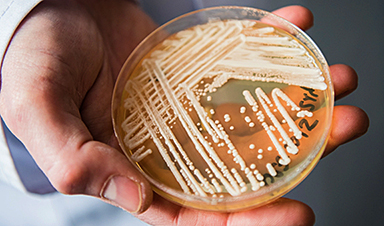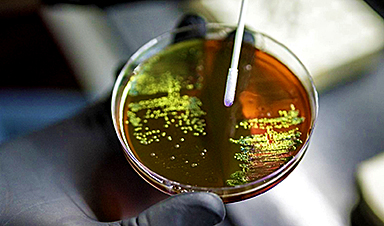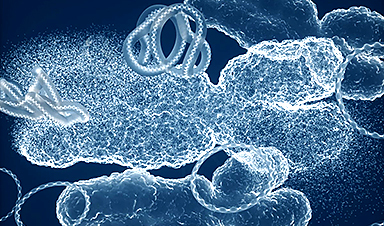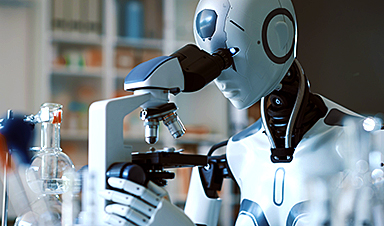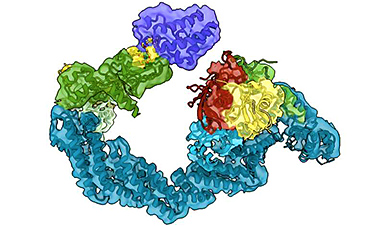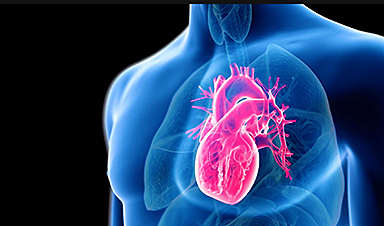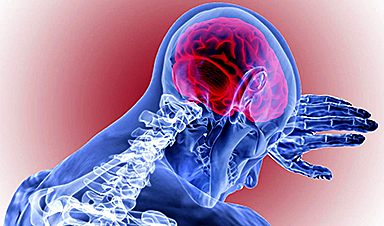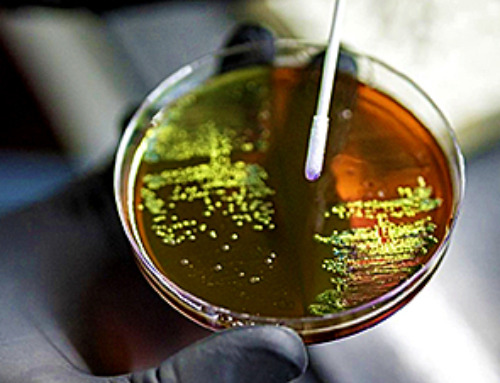The fungus, a type of yeast called Candida auris, or C. auris, can cause severe illness in people with weakened immune systems.
A drug-resistant and potentially deadly fungus has been spreading rapidly through U.S. health care facilities, a new government study finds.
The fungus, a type of yeast called Candida auris, or C. auris, can cause severe illness in people with weakened immune systems. The number of people diagnosed with infections — as well as the number of those who were found through screening to be carrying C. auris — has been rising at an alarming rate since it was first reported in the U.S., researchers from the Centers for Disease Control and Prevention reported Monday.
The increases, “especially in the most recent years, are really concerning to us,” the study’s lead author, Dr. Meghan Lyman, chief medical officer in the CDC’s Mycotic Diseases Branch, said in an interview. “We’ve seen increases not just in areas of ongoing transmission, but also in new areas.”
The CDC’s new warning, published in the Annals of Internal Medicine, comes as the Mississippi Department of Health is fighting a growing outbreak of the fungus. Since November, at least 12 people have been infected with C. auris with four “potentially associated deaths,” the state’s epidemiologist Dr. Paul Byers, said in an email.
There has been ongoing transmission at two long-term care facilities, although cases have been identified at several other facilities in the state.
“Unfortunately, multi-drug resistant organisms such as C. auris have become more prevalent among our highest risk individuals, such as residents in long-term care facilities,” Byers said.
The fungus can be found on the skin and throughout the body, according to the CDC. It’s not a threat to healthy people, but about one-third of people who become sick with C. auris die.
In the CDC report, researchers analyzed state and local health department data on people sickened by the fungus from 2016 through Dec. 31, 2021, as well as those who were “colonized,” meaning they were not ill but were carrying it on their bodies with the potential of transmitting it to others who might be more vulnerable to it.
The number of infections increased by 59%, to 756, from 2019 to 2020 and then by an additional 95%, to 1,471, in 2021.
The researchers also found that the incidence of people not infected with the fungus but colonized by it increased by 21% in 2020, compared to 2019, and by 209% in 2021, with an increase to 4,041 in 2021 compared to 1,310 in 2020.
C. auris has now been detected in more than half of U.S. states, the new study found.
Most concerning was the increasing numbers of fungus samples resistant to the common treatments for it. Lyman hopes the paper will put C. auris on health care providers’ radar and spur facilities to practice “good infection control.”
The new findings are “worrisome,” said Dr. Waleed Javaid, an epidemiologist and an infectious disease expert and director of infection prevention and control at Mount Sinai Downtown in New York.
“But we don’t want people who watched ‘The Last of Us’ to think we’re all going to die,” Javaid said. “This is an infection that occurs in extremely ill individuals who are usually sick with a lot of other issues.”
Even if C. auris moves beyond health care facilities and into communities, it’s unlikely to become a problem for healthy people who do not have invasive medical devices, such as catheters, inserted into their blood vessels, Javaid said.
The main problem is preventing the fungus from spreading to patients in hospital intensive care units, Javaid said. Unfortunately C. auris can colonize not only people who come in contact with the fungus, but also patient rooms.
“By its nature it has an extreme ability to survive on surfaces,” he said. “It can colonize walls, cables, bedding, chairs. We clean everything with bleach and UV light.”
While the fungus was first identified in 2009 in Asia, scientists have determined that C. auris first appeared around the world about a decade earlier, after they re-examined older data and discovered instances where C. auris had been mistakenly identified as a different fungus, Dr. Graham Snyder, medical director of infection prevention at University of Pittsburgh Medical Center, said in an interview.
“It’s the pattern we’ve observed with these types of pathogens,” he said. “Often they start out extremely rare, then they emerge in more and more places and become widespread.”
It’s important to stop the pathogen so it doesn’t spread beyond hospitals and long-term facilities like the drug-resistant bacteria MRSA did, Snyder said.
“It’s not unusual to see MRSA in the community now,” Snyder said. “Will that happen with C. auris? I don’t know. That’s partly why the CDC is raising the alarm.”
News
The Global Nanomedicine Market: Key Players and Emerging Technologies in Healthcare
This article provides an overview of the global nanomedicine market, highlighting key players, emerging technologies, and the challenges and opportunities that influence its growth and commercialization in the healthcare sector. Nanomedicines are nanotechnology-based drug products [...]
Scientists Have Discovered Toxic “Forever Chemicals” in Bottled Water
Scientists have found toxic PFAS in drinking water samples from around the world, with higher levels in tap water from China compared to the UK. Boiling water or using a filtration jug can reduce [...]
Urban Microbes Are Eating Disinfectants – Are We Fueling a New Health Threat?
New research reveals that microbes in urban environments are evolving to withstand the very cleaning agents designed to eliminate them. The study also uncovers new strains in Hong Kong, previously only found in the [...]
Startling Study Shows High-Potency Cannabis Alters DNA
The study shows that frequent use of high-potency cannabis alters DNA, affecting genes related to energy and immune function. These changes differ between those with and without psychosis, suggesting cannabis use could influence mental health through biological [...]
New nanotherapy targets artery inflammation in cardiovascular disease
Inflammation of the arteries is a primary precursor and driver of cardiovascular disease—the No. 1 killer of people in the United States. This inflammation is associated with the buildup of dangerous plaque inside the [...]
Revolutionary Nanoparticle Therapy for Prostate Cancer
A groundbreaking research effort involving teams from the University of Virginia, Mount Sinai, the University of Michigan, the University of Texas, and others has displayed the clinical efficacy of an innovative therapy that utilizes nanoparticles and [...]
Antibody engineering drives innovation in drug development
Monoclonal antibodies (mAbs) are used to prevent, detect, and treat a broad spectrum of non-communicable and communicable diseases. Over the past few years, the market for mAbs has grown exponentially with an expected compound [...]
Breakthrough Study Reveals How Bladder Cancer Starts and Spreads
Researchers found that DNA mutations from antiviral enzymes and chemotherapy fuel early bladder cancer, while abnormal circular DNA in tumor cells drives resistance to therapy. These discoveries open new therapeutic avenues. A groundbreaking study led by [...]
AI and Quantum Mechanics Accelerate Drug Discovery
A recent article published in the Journal of Chemical Information and Modeling researchers at Southern Methodist University (SMU) have developed SmartCADD, an open-source virtual tool designed to speed [...]
Targeting ‘undruggable’ diseases: Researchers reveal new levels of detail in targeted protein degradation
Researchers at the University of Dundee have revealed in the greatest detail yet the workings of molecules called protein degraders which can be deployed to combat what have previously been regarded as "undruggable" diseases, [...]
Revolutionizing Virology: AI Discovers Over 160,000 New RNA Viruses
Largest discovery of new virus species sheds light on the hidden virosphere. Artificial intelligence (AI) has been used to reveal details of a diverse and fundamental branch of life living right under our feet and in every [...]
Cardiac Crisis: COVID-19 Doubles Risk of Heart Attacks, Strokes, and Death
Research indicates that COVID-19 survivors face doubled risks of severe cardiac events for years after recovery, especially if hospitalized. People with A, B, or AB blood types are particularly vulnerable, highlighting the need for personalized approaches [...]
AI steps into science limelight with Nobel wins
For long periods of its history, artificial intelligence has lurked in the hinterland of science, often unloved and unfunded—but two Nobel prizes in one week suggest its time in the sunshine has finally arrived. [...]
MIT Scientists Shed New Light on the Critical Brain Connections That Define Consciousness
A new study provides further evidence that consciousness depends on communication between the brain’s sensory and cognitive regions in the cortex. Our brains are constantly making predictions about our surroundings, enabling us to focus [...]
Common Chemicals Found in Shampoo and Plastic Could Be Quietly Disrupting Your Heart’s Rhythm
UC study of Fernald data links environmental phenols to heart toxicities Environmental phenols are present in numerous everyday consumer products, serving as preservatives in packaged foods, parabens in shampoos, and bisphenol A (BPA) in [...]
Revolutionary Brain Tech Offers New Hope for Stroke and Injury Recovery
University of Pittsburgh researchers report that deep brain stimulation (DBS) can effectively enhance motor functions in individuals with arm and hand paralysis due to brain injuries, with promising results from early human and monkey [...]
